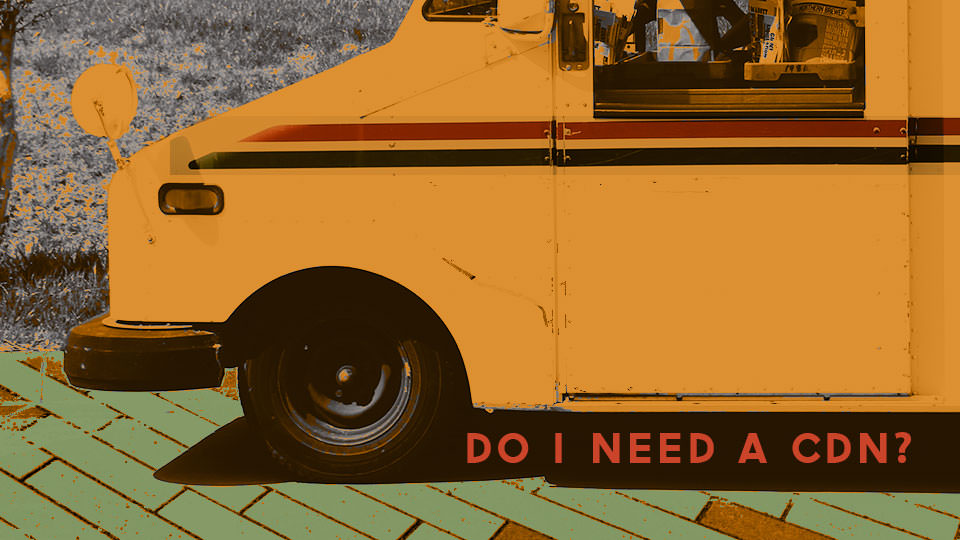Do I Need A CDN?

People want, and even expect, your website to load lightning fast.
Directly opposing this is the fact that as the web continues to grow and evolve, web pages are becoming larger and more complex.
Slow load times can result in visitors bouncing from your site (a.k.a. leaving immediately). FYI – You can see your website’s bounce rate in Google Analytics, if you’re curious.
And not only that. Your site speed is important not just for the sake of your users’ experience. Google is now including page load times in their search ranking algorithms. This means a slow site will negatively affect where you appear on the Google search page, as well.
How Content Delivery Works
Let’s get some web basics under our belt before we continue.
Websites deliver dynamically generated web pages at the moment someone types in a URL into their browser bar and hits enter. For one page, there might be between 50 and 100 static files to download along with it.
Static files are the ones that don’t change. These include images and elements that define the styles and layout of the site. Often, these files are cached in your browser and can then be pulled up when needed to complete a web page without redownloading.
Now that you know just enough to be dangerous, you’re wondering, “So, how can I make my website faster?”
Content Delivery Networks
As part of a solid web strategy, many companies use content delivery networks (CDNs) for faster download speeds.
Why did I go into an explanation of static files? Because a CDN’s purpose is to quickly deliver static content, so web visitors get what they want fast.
A content delivery network is a web of computers around the globe, meaning there are servers (the homes of websites) geographically closer to web visitors. If your request for a web page from Chattanooga goes to a server in California, it would take longer to transfer that information than if the server was in Atlanta.
It’s true that fiber optic cables are the backbone of the internet transmitting this information, but dozens and dozens of static files to transfer can add up to slower download times pretty quickly.
Without a CDN, you only have a single server (the one your site lives on) to handle all requests to download your web page. If you have moderate-to-high traffic, then you likely have times when people are simultaneously trying to access content on your website. And browsers set limits on how many connections can be made to a single domain at one time.
A CDN provides multiple servers that are ready and available to download files and deliver content.
What About My Site?
What does all this mean for you?
If one of the following applies to you, then you should check into getting a CDN:
- Notice your site is running slow
- Have lots of images
- Have moderate-to-high traffic (1,000 or more site visitors per month)
- Would like to give your website an extra speed boost as part of your search engine optimization efforts
CDN pricing can range from $10 a month to $100+ a month. Look at your monthly web traffic to determine which plan is right for you.
